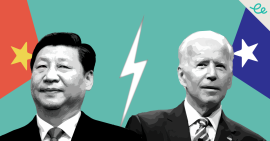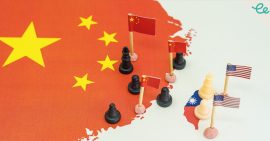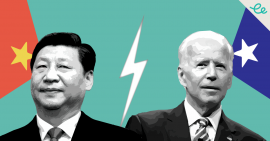Donald Trump made the most headlines on his Asian trip by becoming the first sitting US president to set foot on North Korean soil – by walking into the DMZ for an historic meeting with Kim Jong Un. Yet his earlier meeting with Xi Jinping was the more anticipated, for its impact on troubled China US relations. This article is a summary of important US China news in June 2019.
On the side-lines of the G20 in Osaka, which they overshadowed (again), Trump and Xi agreed to a new cease-fire in their yearlong trade war, averting an escalation, for now at least, as stalled trade talks would resume and the US would hold off on threatened additional tariffs on Chinese goods.
The US president says that negotiations about telecoms giant Huawei will be left to the end of the negotiations with China. In the meantime he has allowed US companies to sell equipment to Huawei. While Trade Secretary Mnuchin said “we were about 90% of the way there [with a deal] and I think there’s a path to complete this,” Chinese media pronouncements underscored Beijing’s will to fight and endure the costs of decoupling.
The two sides have tentatively agreed to another truce to resume talks but Xi’s preconditions include the US removing its ban on the sale of US technology to Huawei. Huawei filed its fourth lawsuit against the US government this year, and denied it has close ties or co-operative projects with China’s military. Washington blacklisted several Chinese supercomputer firms – a sector with profound military and technology implications and one where the world’s No. 2 economy poses a credible threat to US dominance.
Ahead of the G20 in Japan, their teams were scrambling to make a plan, since the negotiators haven’t talked for six weeks. A US business group pleaded to end the costly trade war with China, while Apple calculated the cost of shifting up to 30% of its China production capacity to Southeast Asia.
While US senators target Chinese facial recognition tech firms and genomics companies, the White House delayed action to punish Chinese officials over the abuse of Muslim minorities in Xinjiang, for fear sanctions would disrupt the leaders’ meeting. The US assault against Huawei may cost it $30bn in sales growth over the next two years, admitted founder Ren Zhengfei. But the firm will not be “beaten to death” by Washington, said Ren, who insisted there are “absolutely no backdoors” in his equipment.
“We will end up making a deal with China,” Trump said in mid-month. “We have a very good relationship, although it’s a little bit testy right now.” He repeated his threat to put tariffs on Chinese imports not yet subject to US levies. “I have no deadline. My deadline is what’s up here,” he said, pointing to his head. Three weeks before proposed talks with Xi in Japan, expectations are low for progress towards ending the trade war. Google is speeding up the shift of hardware production from China, and Crocs planned to cut by more than two thirds the volume of China-made products for the US market.
One clear White House deadline gives two years to implement a ban on federal contracts with companies that do business with Huawei, part of a multifaceted US push one US business group called comparable to “murder”. Trump threatened tariffs on another $300bn of Chinese goods – but agreed to decide only after meeting Xi Jinping at the G20. “China does not want to fight a trade war, but also is not afraid of one,” replied China’s commerce ministry. Countermeasures should include a blacklist of “unreliable” foreign companies that the ministry plans to draft soon, and “weaponising” China’s dominance of the supply of rare earths.
The US Department of Defence was set to anger Beijing with the wording of its Indo-Pacific Strategy Report, released on June 1st. In an apparent break with long-standing US adherence to a one-China principle, it lists Taiwan as a “country” in a section detailing US efforts to strengthen partnerships with democracies in the region; the section cites Singapore, Taiwan, New Zealand and Mongolia. Reports about a proposal to sell over $2bn worth of weapons to Taiwan is also escalating tensions.
Both defence ministers talked tough. “If the U.S. wants to talk, we will keep the door open. If they want to fight, we will fight to the end,” said China’s Wei Fenghe. China uses a “toolkit of coercion” to steal tech and militarise the South China Sea, said US Acting Defense Secretary Patrick Shanahan.







Comments are closed.